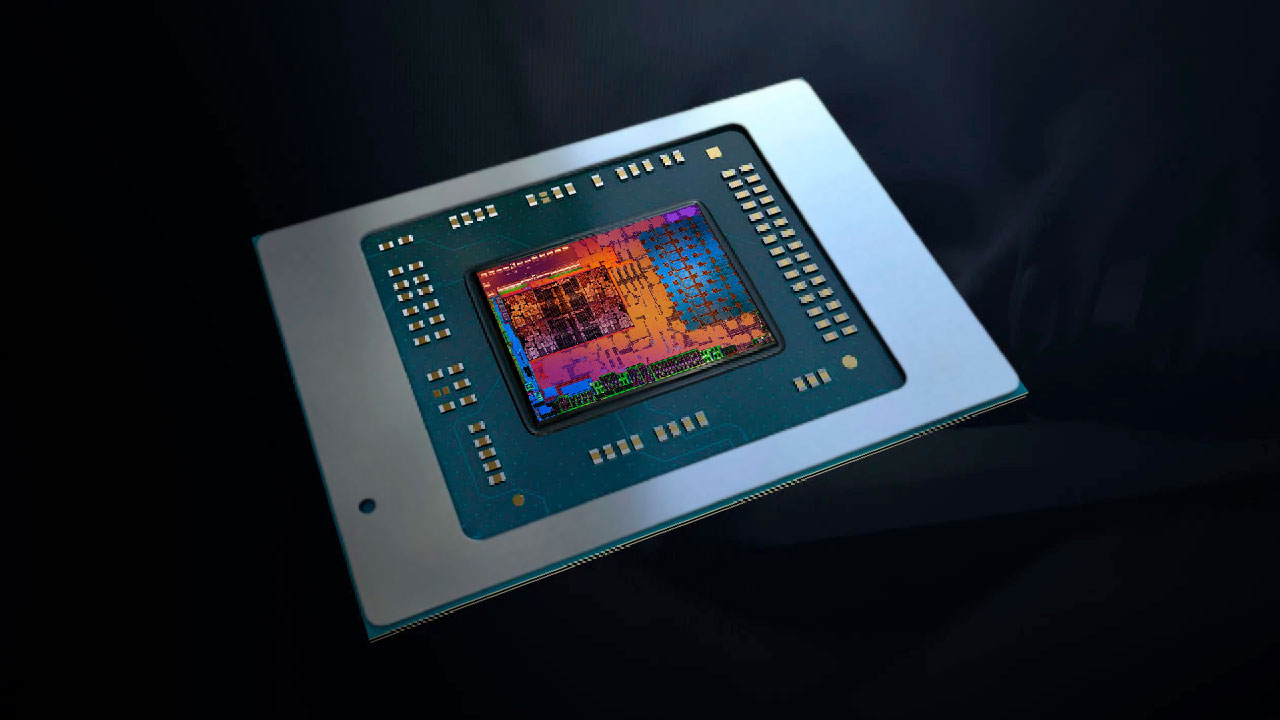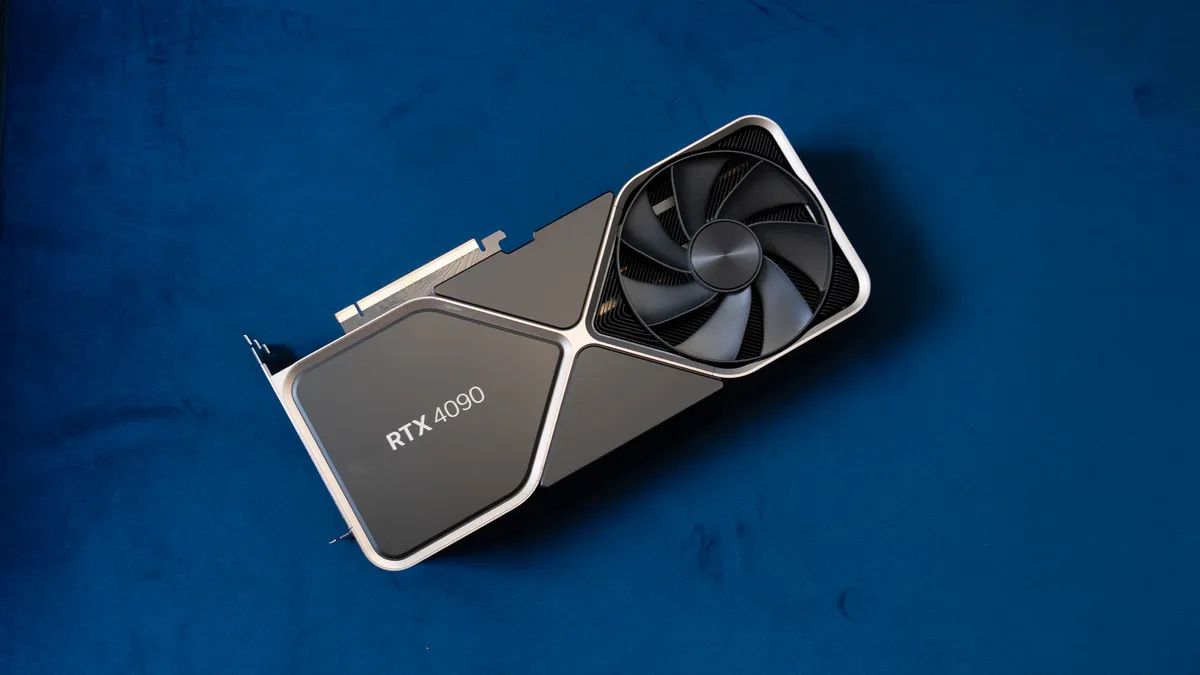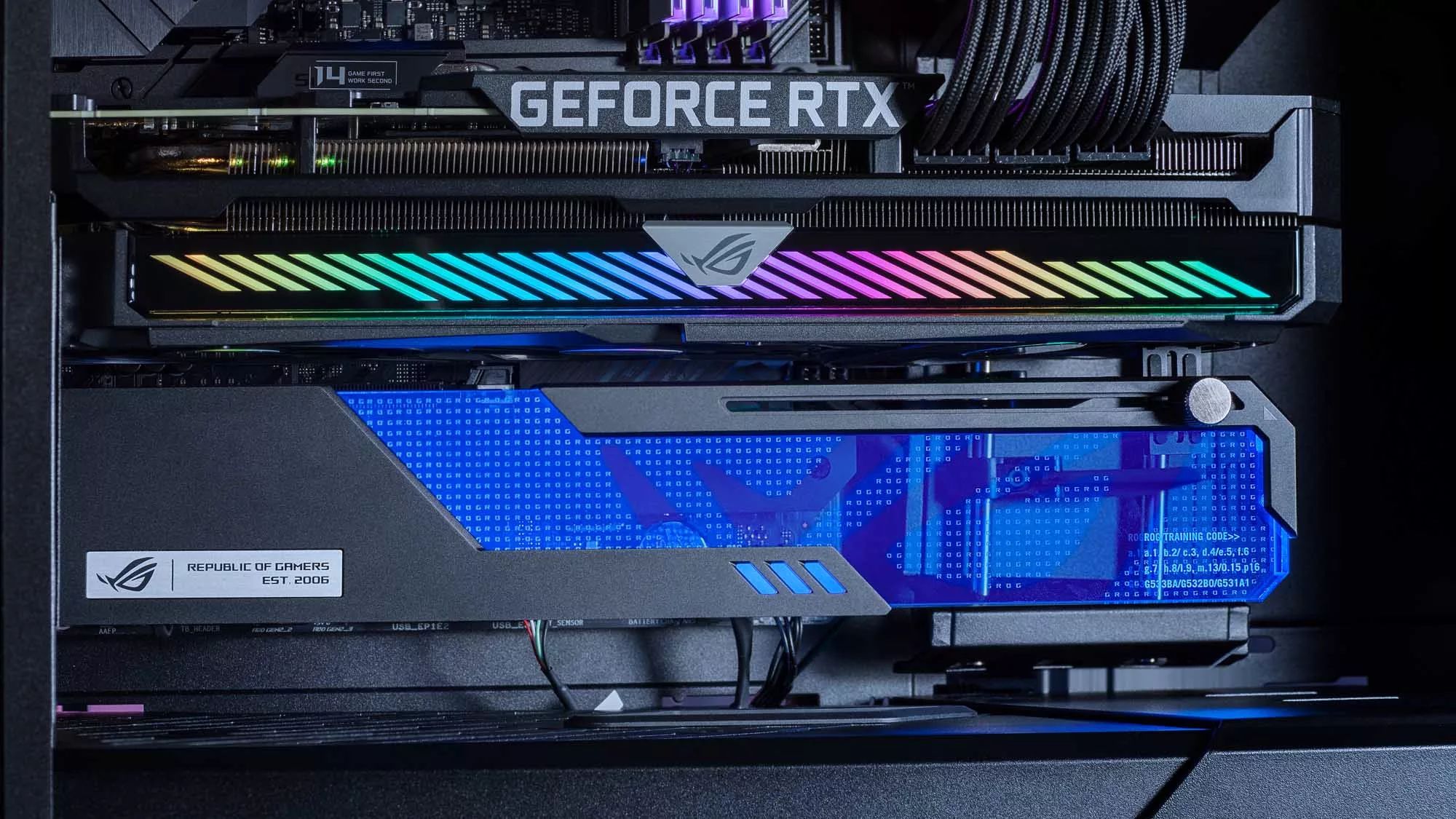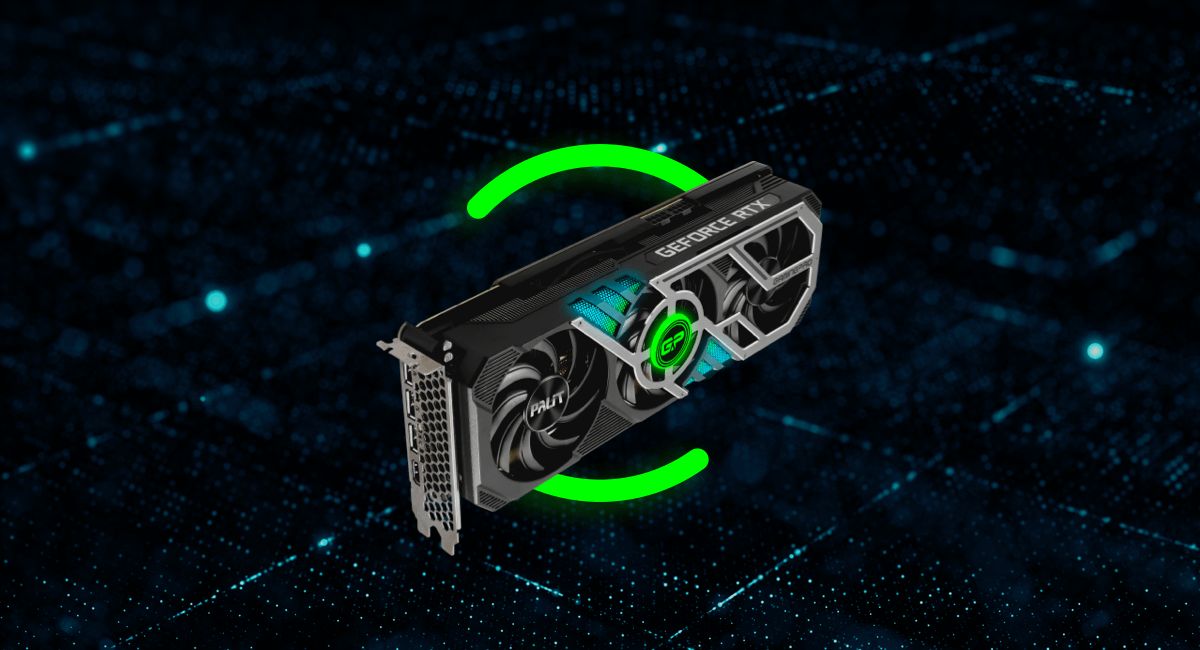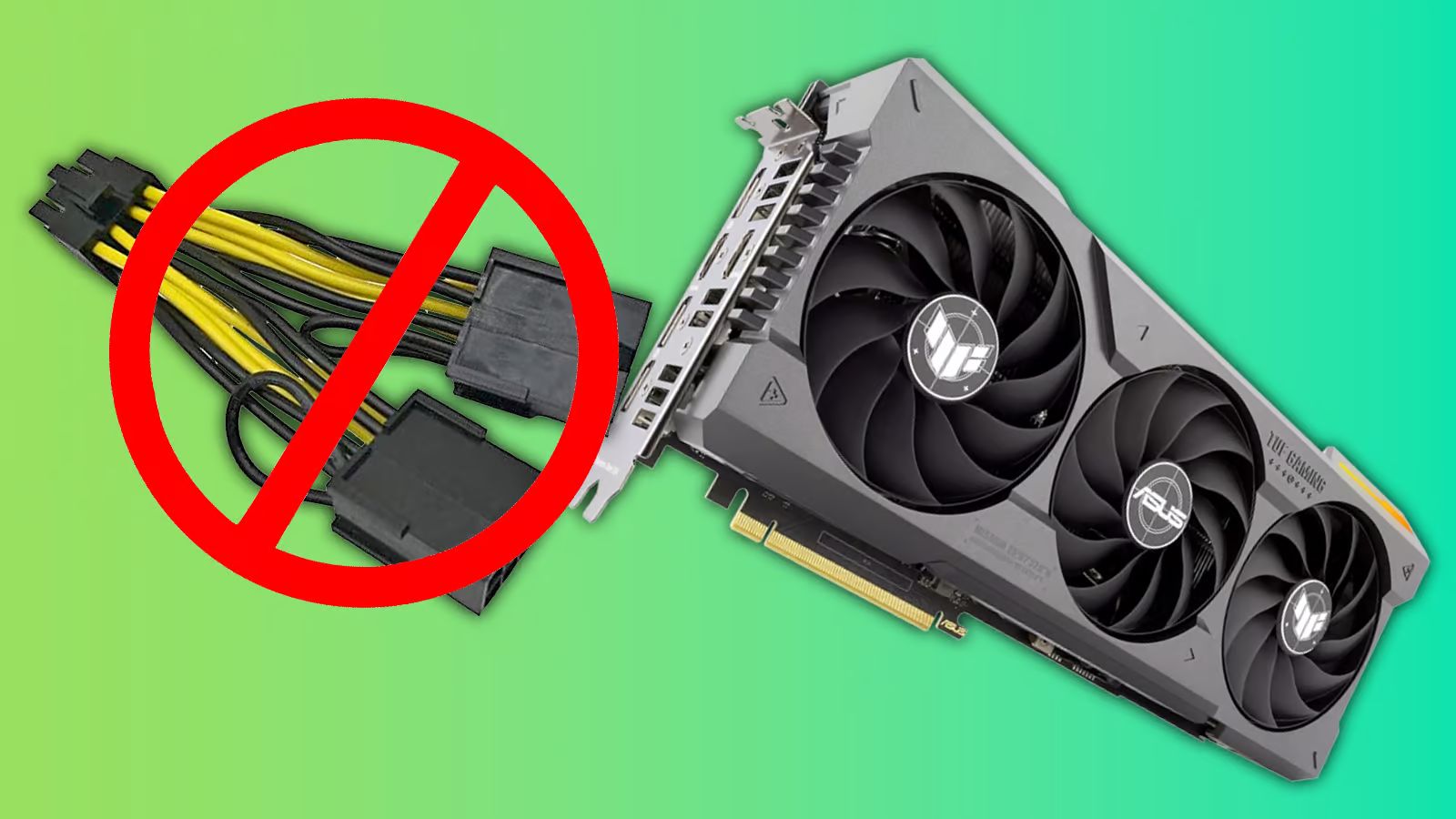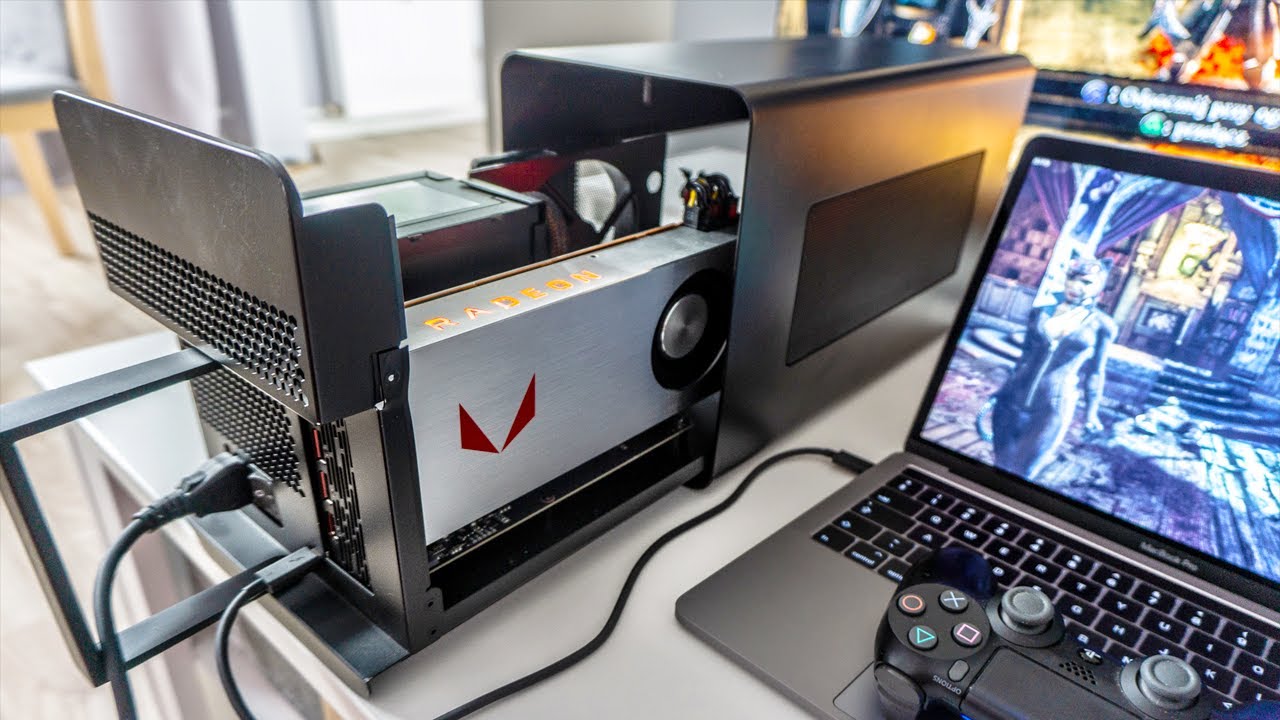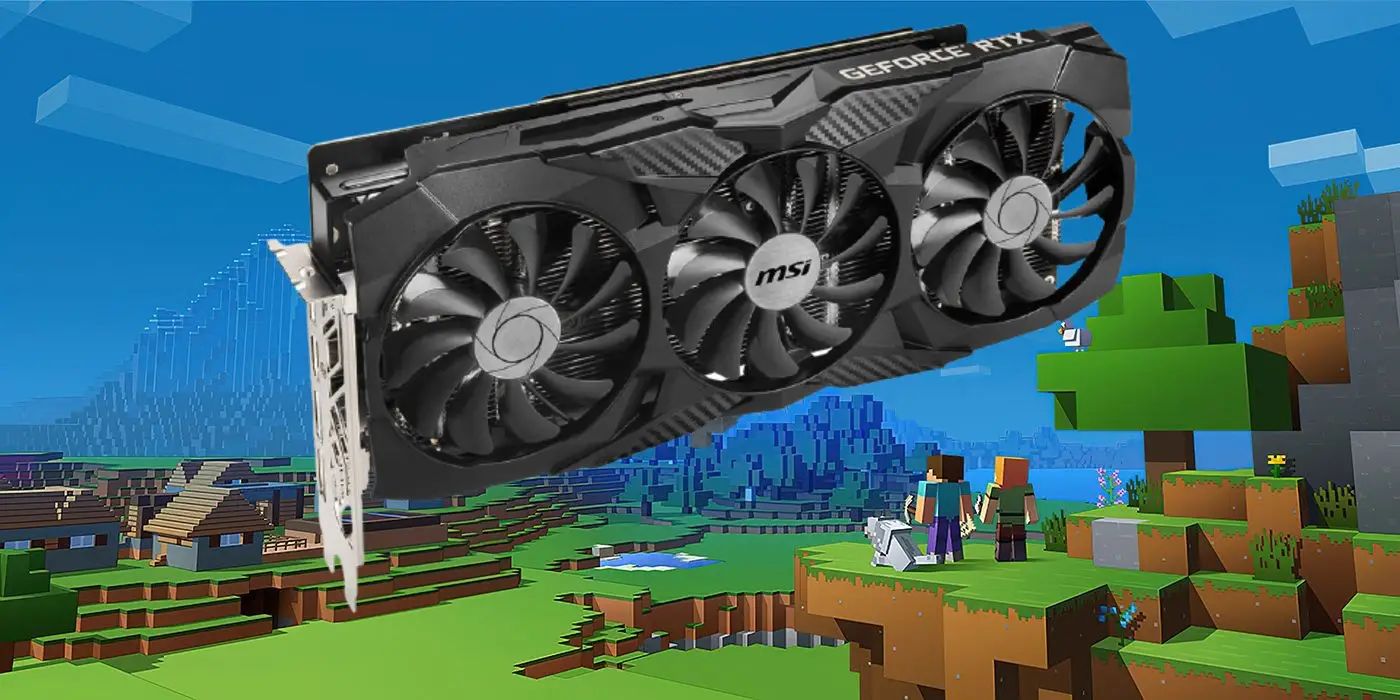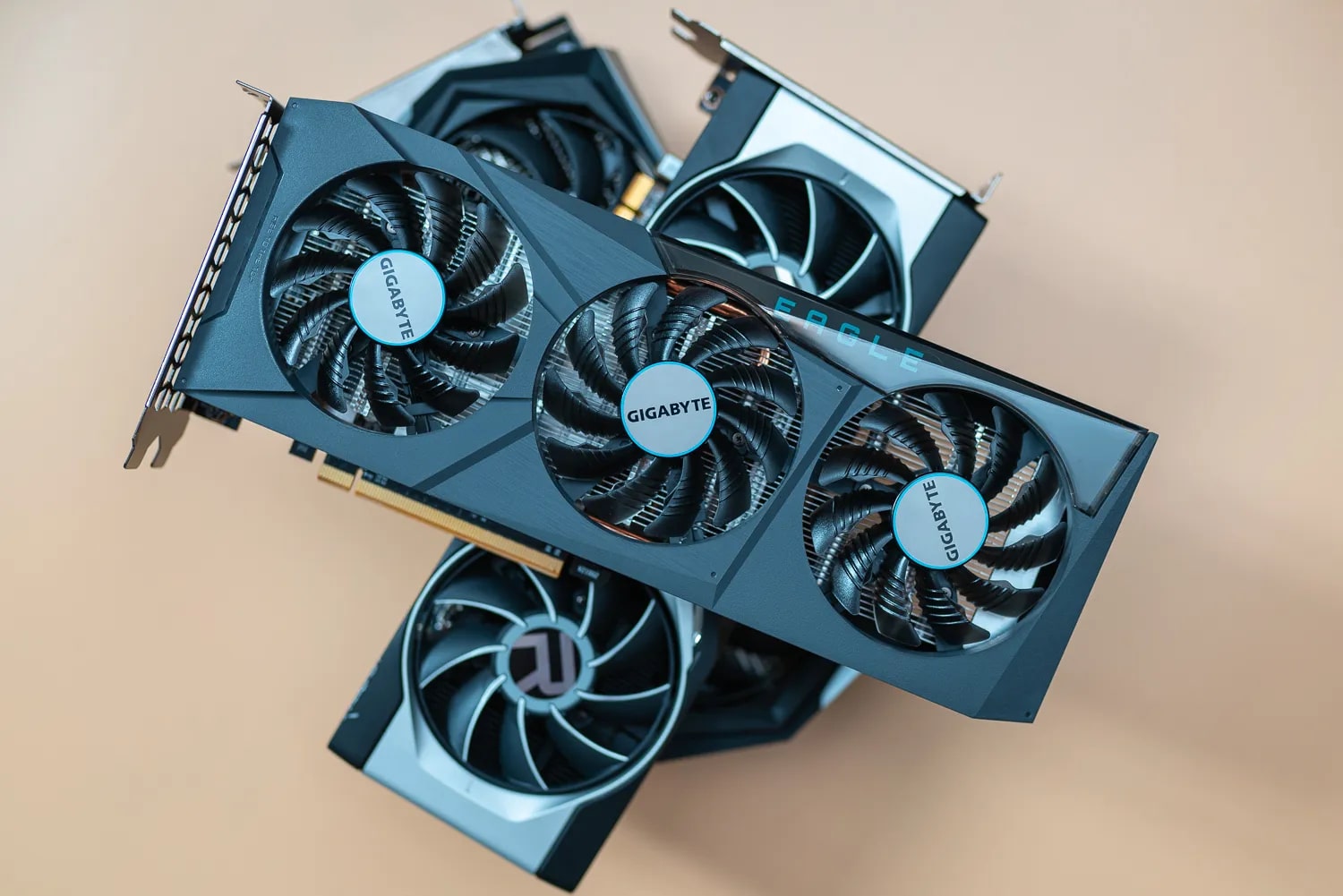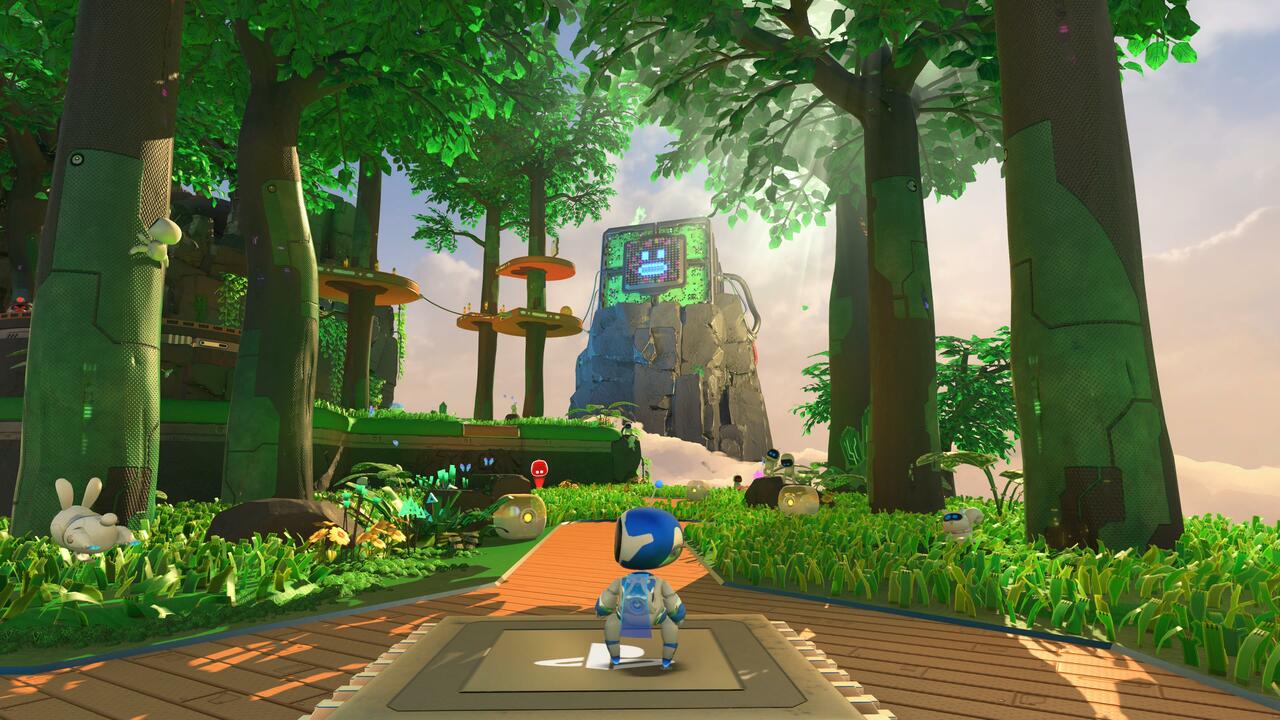What Is An Integrated GPU
An Integrated Graphics Processing Unit (GPU), also known as an Integrated Graphics Card or Integrated GPU, refers to a graphics chip that is integrated into the motherboard of a computer or laptop. Unlike a dedicated graphics card, which has its own separate processing unit and memory, an integrated GPU shares system resources, such as the computer’s RAM (Random Access Memory), with the CPU (Central Processing Unit).
This type of GPU is commonly found in entry-level or budget-friendly computers and laptops, as well as in built-in graphics solutions for processors from Intel (Intel HD Graphics) and AMD (APU series). Integrated GPUs provide basic graphics performance suitable for everyday tasks like web browsing, word processing, and video streaming.
The main distinction between an integrated GPU and a dedicated graphics card lies in their performance capabilities. While integrated graphics are sufficient for most non-intensive tasks, they lack the power and specialized memory of dedicated graphics cards, which are designed for demanding applications like gaming, video editing, and 3D rendering.
Integrated GPUs are typically embedded within the computer’s processor, eliminating the need for a separate graphics card and improving power efficiency. This integration allows for a more compact design, making them ideal for laptops and small form factor PCs.
However, it’s important to note that the performance of an integrated GPU will vary depending on the specific model and generation. Newer integrated GPUs tend to offer better performance and improved support for modern display technologies, such as 4K resolution and HDR (High Dynamic Range).
While an integrated GPU may not match the capabilities of a dedicated graphics card, it does offer several advantages. It reduces the cost of the computer or laptop since there is no need to purchase an additional graphics card. Integrated GPUs also consume less power, generate less heat, and require less space compared to dedicated graphics cards, making them an attractive option for those seeking energy efficiency and compactness.
In summary, an integrated GPU is a graphics processing solution that is integrated into the motherboard of a computer or laptop. While it may not provide the same level of performance as dedicated graphics cards, it offers a cost-effective and energy-efficient solution for everyday computing tasks.
Understanding Integrated Graphics
Integrated Graphics, also known as Integrated Graphics Processing Units (iGPUs), are a type of graphics solution that is built into the motherboard or CPU of a computer. These graphics solutions are designed to handle the basic graphical needs of a computer system, such as displaying images, videos, and web content.
Integrated graphics utilize a portion of the computer’s main memory (RAM) for storing and processing graphics data, eliminating the need for dedicated video memory like that found in discrete graphics cards. They leverage the processing power of the computer’s CPU to handle graphics rendering tasks, allowing for a more compact and cost-effective system design.
Integrated graphics have come a long way in terms of performance and capabilities. In the past, they were primarily used for basic 2D graphics and light multimedia tasks. However, with advancements in technology, modern integrated graphics can handle more demanding tasks, including video playback, casual gaming, and even some entry-level professional applications.
One of the key advantages of integrated graphics is their energy efficiency. Since they share system resources with the CPU, they consume less power compared to dedicated graphics cards. This makes them especially suitable for laptops and other mobile devices where battery life is a critical factor.
Integrated graphics also offer compatibility advantages. Unlike dedicated graphics cards, which require specific driver installations and potential compatibility issues, integrated graphics are typically seamlessly integrated into the computer system. They work out of the box without the need for additional setup or configuration.
However, it’s important to note that integrated graphics have their limitations. They are not designed for high-performance gaming or resource-intensive graphics tasks. Their reliance on shared system memory can limit their performance, especially when dealing with graphically demanding applications. This can result in lower frame rates, reduced visual quality, and limited support for advanced graphics features.
Despite their limitations, integrated graphics are perfectly suited for everyday computing tasks such as web browsing, document editing, media consumption, and even some light gaming. They provide a cost-effective and energy-efficient solution for users who have moderate graphical needs and do not require the advanced capabilities of a dedicated graphics card.
In summary, integrated graphics are built-in graphics solutions that are incorporated into the motherboard or CPU of a computer. They leverage system memory and CPU processing power to handle basic graphical tasks. While they may not match the performance of dedicated graphics cards, they offer energy efficiency, compatibility, and cost-effectiveness for everyday computing needs.
How an Integrated GPU Works
An Integrated Graphics Processing Unit (GPU) works by utilizing the resources of the computer’s central processing unit (CPU) to handle the graphics processing tasks. Unlike dedicated graphics cards, which have their own dedicated processing units and memory, integrated GPUs share the system resources with the CPU, including the main memory (RAM).
When a computer system with an integrated GPU receives a command to render graphics, the CPU forwards the tasks to the integrated GPU for processing. The integrated GPU then utilizes a portion of the system memory as its video memory to store and manipulate the graphical data. This shared memory model allows for cost savings and reduced power consumption.
The integrated GPU follows a similar workflow as a dedicated graphics card, which involves several key processes. These processes include geometry processing, rasterization, and pixel shading. The integrated GPU interprets the commands, converts 3D objects into 2D representations, performs calculations related to lighting, textures, and shading, and finally renders the pixels to be displayed on the monitor.
One of the important factors that determine the performance of an integrated GPU is the clock speed, which represents the speed at which the GPU processes the graphics data. Higher clock speeds generally indicate faster performance. However, clock speeds alone do not provide a complete picture of the GPU’s capabilities. Other factors, such as the number of shader cores and the architecture of the GPU, also play a significant role in determining its performance.
Integrated GPUs also rely on software drivers to enable communication between the GPU and the operating system. These drivers provide the necessary instructions for the GPU to function properly and support various graphics APIs (Application Programming Interfaces), such as DirectX and OpenGL. It’s important to keep the GPU drivers up to date to ensure optimal performance and compatibility with the latest software and games.
In terms of memory usage, integrated GPUs share the system memory with the CPU rather than having dedicated video memory. This can limit the available memory for graphics processing, especially in systems with limited RAM. It’s essential to consider the amount of memory available and ensure that it is sufficient for the intended tasks and applications.
While integrated GPUs may not match the power and performance of dedicated graphics cards, they provide a cost-effective solution for everyday computing and basic graphical tasks. They offer energy efficiency, compactness, and compatibility, making them suitable for a wide range of applications, including web browsing, document editing, media consumption, and light gaming.
In summary, an integrated GPU utilizes the resources of the CPU and the shared system memory to handle graphics processing tasks. It follows a similar workflow as a dedicated graphics card but with some limitations in performance and memory usage. Integrated GPUs offer cost-effectiveness and energy efficiency for everyday computing needs.
Advantages and Disadvantages of Integrated GPUs
Integrated Graphics Processing Units (GPUs) offer several advantages and disadvantages compared to dedicated graphics cards. Understanding these pros and cons can help users make informed decisions when choosing between integrated and dedicated graphics solutions for their computing needs.
Advantages of Integrated GPUs:
- Cost-effective: One of the primary advantages of integrated GPUs is their cost-effectiveness. Since they are built into the motherboard or CPU, there is no need to purchase a separate graphics card, which can significantly reduce the overall cost of a computer system.
- Energy-efficient: Integrated GPUs consume less power compared to dedicated graphics cards. This makes them ideal for laptops and other mobile devices where battery life and energy efficiency are crucial factors.
- Compact design: Integrated GPUs eliminate the need for a separate graphics card, resulting in a more compact and space-saving design for computers and laptops. This is particularly advantageous for small form factor PCs and portable devices.
- Compatibility: Integrated GPUs are seamlessly integrated into the system, which means they work out of the box without the need for additional configuration or driver installations. This ensures easy compatibility with the operating system and reduces potential compatibility issues.
Disadvantages of Integrated GPUs:
- Limited performance: One of the main drawbacks of integrated GPUs is their limited performance compared to dedicated graphics cards. Integrated graphics solutions are designed for basic graphical tasks and may struggle with graphically demanding applications, such as gaming or professional video editing.
- Shared system memory: Integrated GPUs rely on shared system memory for storing and processing graphics data, which can limit the available memory for other applications and tasks. This can result in reduced overall system performance when dealing with graphics-intensive workloads or running multiple demanding programs simultaneously.
- Limited graphics features: Integrated GPUs may lack certain advanced graphics features found in dedicated graphics cards, such as support for high-resolution displays, multi-monitor setups, or hardware-specific technologies like ray tracing or virtual reality.
- Upgradability: Unlike dedicated graphics cards, which can be easily upgraded or replaced, integrated GPUs are integrated into the system and cannot be upgraded individually. Upgrading the GPU often requires replacing the entire motherboard or CPU, which may not be a feasible or cost-effective option for many users.
In summary, integrated GPUs provide a cost-effective and energy-efficient graphics solution for everyday computing tasks. While they offer advantages such as lower cost, energy efficiency, and compactness, they also have limitations in terms of performance, shared memory usage, and lack of advanced graphics features. Users should consider their specific needs and requirements to determine whether an integrated GPU is sufficient or if they need the higher performance capabilities of a dedicated graphics card.
How to Determine if Your Computer has an Integrated GPU
Determining whether your computer has an Integrated Graphics Processing Unit (GPU) is a relatively straightforward process. Here are a few methods you can use to identify if your computer system utilizes an integrated GPU:
1. Check your computer specifications:
Consult the specifications of your computer or the documentation provided by the manufacturer. Look for terms such as “Integrated Graphics” or “Integrated GPU” in the specifications. This information can often be found on the manufacturer’s website or in the user manual that came with your computer.
2. Access the Device Manager:
On a Windows computer, you can access the Device Manager to view information about your computer’s hardware. To do this, press the Windows key + X and select “Device Manager.” Expand the “Display adapters” section, and you should see the name of your integrated GPU listed. Common integrated GPU models include Intel HD Graphics, Intel UHD Graphics, and AMD Radeon Graphics.
3. Use system information tools:
System information tools, such as CPU-Z or GPU-Z, can provide detailed information about your computer’s hardware configuration. These tools will display information about your CPU and GPU, including whether you have a dedicated graphics card or an integrated GPU.
4. Check the BIOS/UEFI settings:
Accessing your computer’s BIOS (Basic Input/Output System) or UEFI (Unified Extensible Firmware Interface) settings can also provide information about your graphics configuration. Restart your computer and enter the BIOS/UEFI settings by pressing the appropriate key during the boot process (common keys include F2, Del, or Esc). Look for a section related to graphics or display settings, where you may find information about the integrated GPU.
5. Consult with the manufacturer:
If you are still unsure whether your computer has an integrated GPU, you can contact the manufacturer’s support team for assistance. They will be able to provide accurate information about your specific computer model and its graphics configuration.
It’s important to note that the presence of an integrated GPU does not necessarily mean that you cannot use a dedicated graphics card. Many computers with integrated graphics also have expansion slots to add a dedicated graphics card, offering users the flexibility to upgrade their graphics capabilities if desired.
In summary, you can determine if your computer has an integrated GPU by checking the specifications, accessing the Device Manager, using system information tools, checking the BIOS/UEFI settings, or consulting with the manufacturer’s support. By understanding your computer’s graphics configuration, you can make informed decisions about upgrading or optimizing your graphics capabilities.
Common Uses and Applications of Integrated Graphics
Integrated Graphics Processing Units (GPUs) serve various purposes and find broad applications in different computing environments. While they may not offer the same level of performance as dedicated graphics cards, integrated GPUs are well-suited for a range of common uses and everyday tasks. Here are some of the most common uses and applications of integrated graphics:
1. Web Browsing and Productivity:
Integrated graphics provide sufficient performance for web browsing, allowing users to smoothly navigate through websites, view multimedia content, and interact with web-based applications. They are also suitable for productivity tasks like word processing, spreadsheet management, and creating presentations.
2. Media Consumption:
Integrated GPUs are capable of handling video playback, making them ideal for streaming movies, TV shows, and online videos. They can handle common video formats and resolutions, ensuring smooth and high-quality playback on monitors or external displays.
3. Email and Communication:
For basic email management, instant messaging, and video conferencing applications, integrated graphics provide sufficient graphical capabilities. Users can comfortably communicate and collaborate with others without the need for a dedicated graphics card.
4. Casual Gaming:
Integrated GPUs are suitable for playing casual or older games that do not have high graphical demands. They can handle simpler 2D games, browser-based games, and some less resource-intensive 3D games. While not designed for high-performance gaming, integrated graphics can still provide an enjoyable gaming experience for less demanding titles.
5. Educational and Learning Applications:
Integrated graphics are commonly found in educational institutions where they power interactive learning software, simulations, and educational games. They can provide the necessary graphical performance for educational applications without the need for additional hardware expenses.
6. Basic Graphic Design and Image Editing:
Integrated GPUs can handle basic graphic design and image editing tasks. They are suitable for applications that involve creating simple designs, editing photos, or working with vector graphics. While not as powerful as dedicated graphics solutions, integrated graphics can still provide reasonable performance for entry-level design work.
7. Business and Office Applications:
For day-to-day business tasks, integrated graphics can handle various office applications, such as spreadsheets, presentations, document editing, and data visualization. They can support the graphical requirements of these applications and ensure a smooth user experience.
Overall, integrated graphics are suitable for a wide range of common uses and applications. They provide sufficient graphical performance for web browsing, media consumption, communication, casual gaming, educational applications, basic graphic design and image editing, as well as business and office tasks. However, for more demanding tasks like high-performance gaming, video editing, or 3D rendering, a dedicated graphics card would be more appropriate.
Integrated Graphics vs Dedicated Graphics Cards: A Comparison
When it comes to graphics processing in computers, users have the choice between integrated graphics and dedicated graphics cards. Understanding the differences between these two options can help users determine which solution is best suited for their needs. Here is a comparison of integrated graphics and dedicated graphics cards:
Performance:
One of the main differences between integrated graphics and dedicated graphics cards is their performance capabilities. Integrated graphics, utilizing the CPU and shared system memory, offer sufficient performance for basic tasks like web browsing and media consumption. Dedicated graphics cards, on the other hand, have their own dedicated processing unit and memory, providing superior performance for demanding tasks like gaming, video editing, and 3D rendering.
Power Efficiency:
Integrated graphics are designed to operate efficiently and consume less power compared to dedicated graphics cards. This makes them more suitable for laptops and other portable devices where battery life is a critical factor. Dedicated graphics cards, due to their higher performance and dedicated hardware, consume more power and generate more heat.
Upgradability:
Integrated graphics are typically integrated into the motherboard or CPU, meaning they cannot be upgraded individually. Upgrading the GPU often requires replacing the entire motherboard or CPU. In contrast, dedicated graphics cards can be easily upgraded or replaced, offering users the ability to enhance their graphics performance without changing the entire system.
Cost:
Integrated graphics are included in the cost of the computer system, making them a more cost-effective option for users on a budget. Dedicated graphics cards, however, come with an additional cost, as users need to purchase the card separately. Prices vary depending on the performance level and brand of the graphics card.
Specialized Features:
Dedicated graphics cards often include specialized features that are not available in integrated graphics solutions. These features can include support for high-resolution displays, advanced graphical effects, multiple monitor setups, ray tracing, and virtual reality. Integrated graphics, while improving over time, may not offer the same level of advanced features as dedicated graphics cards.
Use Cases:
Integrated graphics are well-suited for everyday tasks such as web browsing, media consumption, email, and productivity applications. They can handle casual gaming and basic graphic design work. Dedicated graphics cards, on the other hand, excel in providing high-performance graphics capabilities for demanding applications such as gaming, video editing, 3D rendering, and professional design work.
In summary, integrated graphics offer cost-effectiveness, power efficiency, and are suitable for everyday computing tasks. They provide sufficient performance for basic needs but may struggle with graphically demanding applications. Dedicated graphics cards, on the other hand, offer superior performance, advanced features, and upgradability, making them ideal for gaming, video editing, and other graphics-intensive tasks. Users should consider their specific requirements and budget to determine whether integrated graphics or a dedicated graphics card is the better choice for their computing needs.
Tips for Optimizing Performance with an Integrated GPU
While integrated graphics provide a cost-effective solution for everyday computing needs, there are several tips and techniques that can help optimize the performance of an Integrated Graphics Processing Unit (GPU). By implementing these strategies, users can enhance the graphical capabilities of their system. Here are some tips for optimizing performance with an integrated GPU:
1. Keep Graphics Drivers Up to Date:
Regularly check for and install the latest graphics drivers for your integrated GPU. Graphics driver updates often include performance improvements, bug fixes, and compatibility enhancements that can improve the overall performance and stability of your system.
2. Adjust Graphics Settings:
In many applications, including games, you can adjust the graphics settings to optimize performance. Reduce settings like resolution, anti-aliasing, texture quality, and other graphical effects to lighten the load on your integrated GPU and achieve smoother performance.
3. Close Unnecessary Background Programs:
Running multiple programs in the background can consume system resources, impacting the performance of your integrated GPU. Close any unnecessary programs or processes to free up resources and ensure optimal performance for graphics-intensive tasks.
4. Manage System Memory:
Since integrated GPUs utilize shared system memory, it’s important to manage your system’s memory usage effectively. Avoid running too many memory-heavy applications simultaneously to ensure that sufficient memory is available for graphics processing.
5. Optimize Power Settings:
Adjust your computer’s power settings to balance performance and power efficiency. Setting the power plan to “High Performance” can help ensure that your integrated GPU operates at its full potential, but this may have an impact on battery life for laptops.
6. Consider External Cooling:
Integrated GPUs, like any other graphics processing solution, can generate heat. If you find that your integrated GPU is overheating and experiencing performance issues, consider using external cooling solutions such as laptop cooling pads or desktop fans to help dissipate heat more effectively.
7. Monitor GPU Temperature:
Keep an eye on the temperature of your integrated GPU to prevent overheating. Use dedicated software like GPU-Z or MSI Afterburner to monitor the GPU temperature and adjust your usage accordingly to prevent performance throttling and potential hardware damage.
8. Optimize Display Settings:
Adjusting your display settings can help improve the performance of your integrated GPU. Lowering the screen resolution, scaling, or refresh rate can reduce the workload on the GPU and enhance overall performance.
By implementing these tips for optimizing performance with an integrated GPU, users can maximize their system’s graphical capabilities. While integrated graphics may not match the performance capabilities of dedicated graphics cards, these strategies can help users get the most out of their integrated GPU for everyday computing tasks and light gaming.
Upgrading or Adding a Dedicated Graphics Card to Your Computer
If you’re looking to enhance the graphics performance of your computer beyond what an integrated GPU can offer, you may consider upgrading or adding a dedicated graphics card. This allows you to enjoy improved gaming capabilities, faster rendering, and enhanced graphical performance for demanding applications. Here are some important factors to consider when upgrading or adding a dedicated graphics card to your computer:
1. Compatibility:
Before purchasing a graphics card, ensure that it is compatible with your computer’s motherboard and power supply. Check the expansion slots available, the power requirements of the graphics card, and any additional connectors that may be necessary for installation.
2. Power Supply:
Upgrading to a dedicated graphics card often requires a sufficient power supply. Ensure that your power supply has the necessary power connectors and provides ample wattage to support the additional power demands of the graphics card. Consult the graphics card’s specifications for the recommended power supply requirements.
3. Physical Space:
Dedicated graphics cards can be larger in size compared to integrated GPUs. Ensure that your computer case has enough physical space to accommodate the desired graphics card. Measure the available space and check the length and width specifications of potential graphics card options.
4. Performance Requirements:
Determine the level of performance you require from the graphics card. Consider the tasks you’ll be performing, such as gaming, video editing, or 3D rendering, and choose a graphics card that meets your performance needs and budget. Research benchmarks and reviews to compare the performance of different models.
5. Cooling and Heat Dissipation:
Dedicated graphics cards generate more heat compared to integrated graphics. Ensure that your computer case has adequate airflow and consider additional cooling options, such as case fans or aftermarket GPU coolers, to keep temperatures within safe limits. Proper cooling helps prevent performance throttling and extends the lifespan of your graphics card.
6. Driver Support:
Check for driver support for your operating system and the specific graphics card you plan to purchase. Ensure that the manufacturer regularly updates drivers to improve compatibility, performance, and address any known issues. Using the latest drivers optimizes the performance and stability of your graphics card.
7. Performance vs. Price:
Consider your budget and balance it with your desired performance level. Graphics cards vary greatly in price, and it’s important to assess whether the performance improvement justifies the cost. Research and compare different models to find the best graphics card that suits both your needs and your budget.
Upgrading or adding a dedicated graphics card to your computer can significantly enhance the graphical capabilities of your system. From gaming to professional applications, a dedicated graphics card offers improved performance and visual quality. By considering factors such as compatibility, power supply, physical space, cooling, performance requirements, driver support, and price, you can make an informed decision and select the right graphics card for your computing needs.







